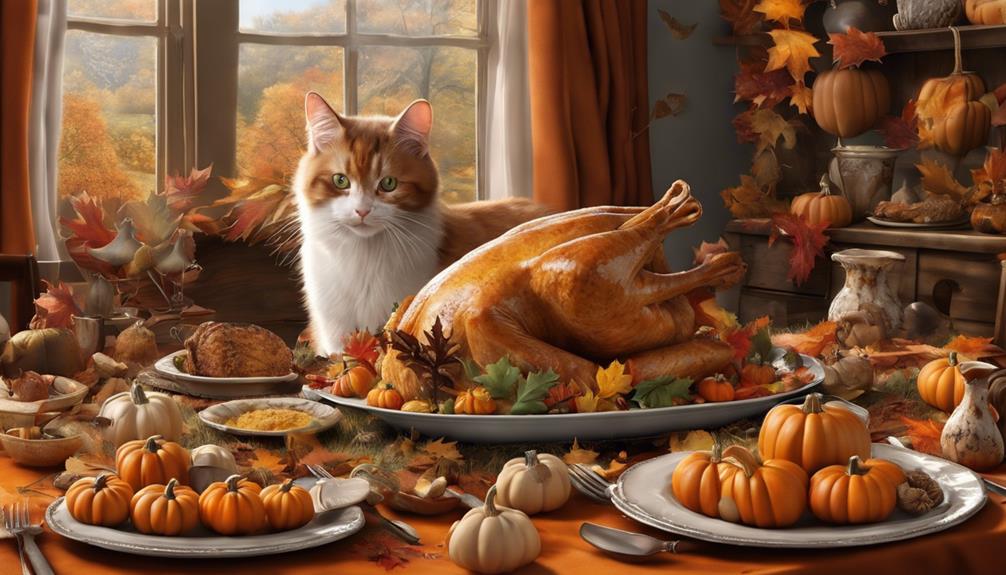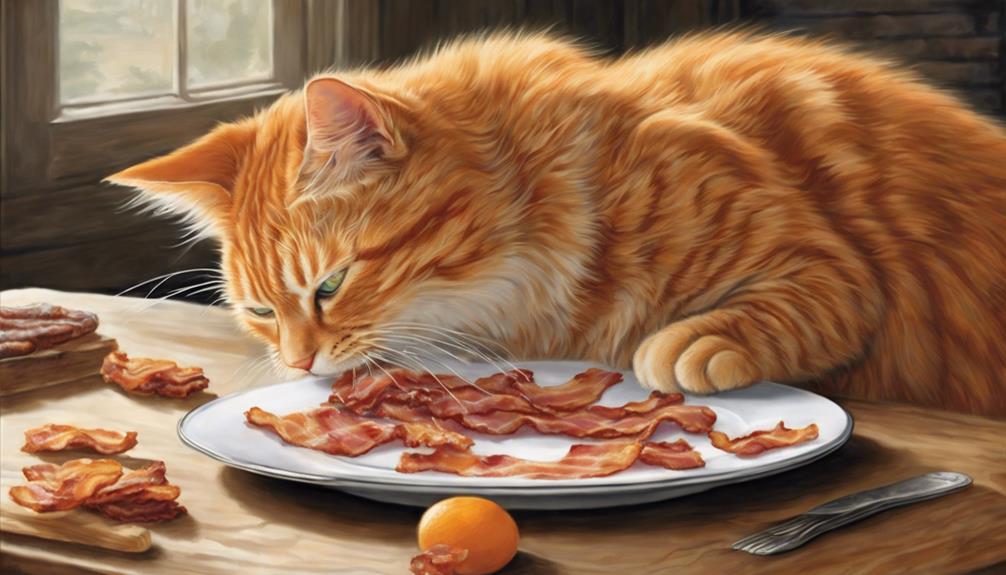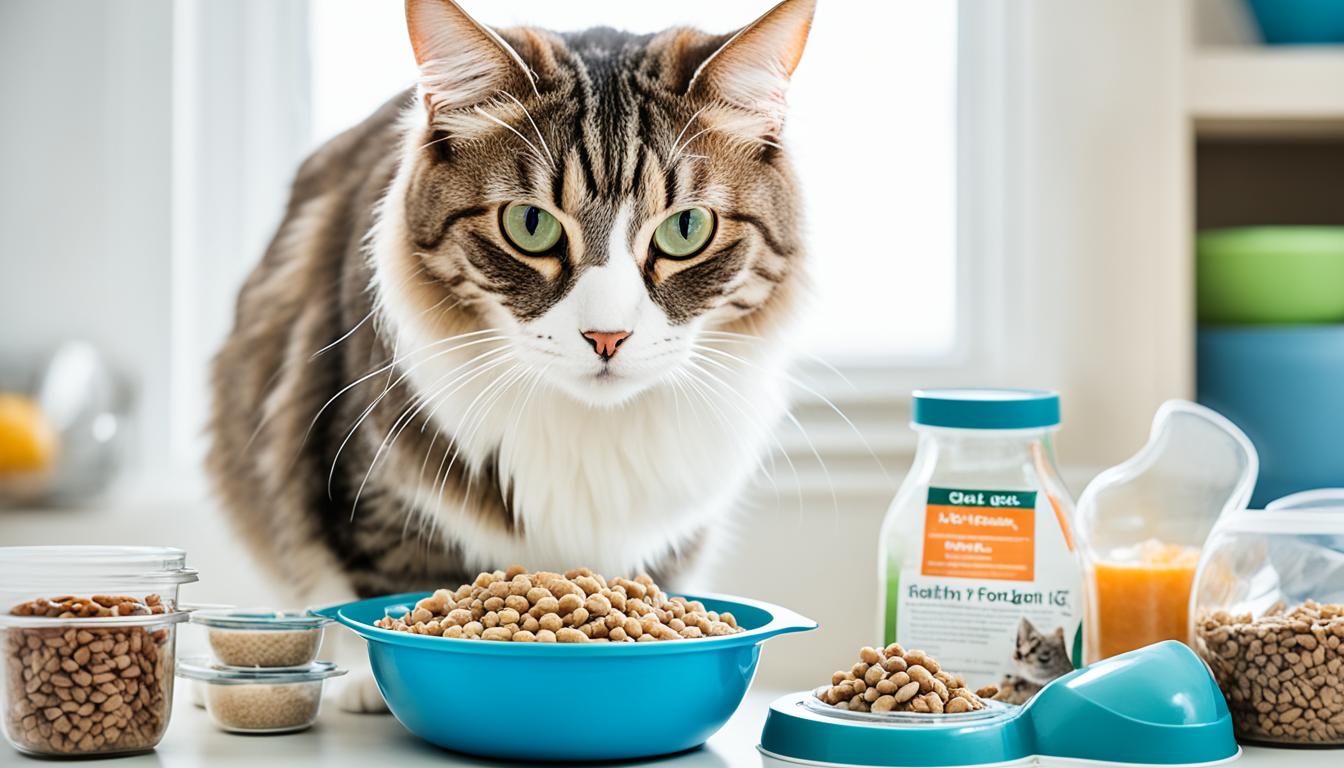Decoding your cat’s body language helps you understand what your feline is truly feeling. A high-held tail with a slight quiver shows confidence, while puffed-up fur indicates fear or agitation. Flattened ears and dilated pupils suggest stress or aggression, and a tucked tail signals insecurity. Pay attention to their overall posture and subtle cues like tail flicks to respond appropriately. Keep exploring these signals to strengthen your bond and better support your cat’s emotional well-being.
Key Takeaways
- Observe tail position and movements to gauge confidence, agitation, or fear in your cat.
- Note ear orientation; flattened ears often indicate stress or aggression, while alert ears show curiosity.
- Pay attention to eye expressions—dilated pupils suggest excitement or fear, soft eyes indicate relaxation.
- Watch overall body posture; relaxed, stretched-out stance signals contentment, while arched back shows defensiveness.
- Combine multiple cues, such as tail, ears, eyes, and posture, for an accurate understanding of your cat’s emotional state.

Understanding a cat’s body language is essential for building a strong bond with your feline friend. Cats communicate a lot through subtle cues, and recognizing these signals helps you understand what they’re feeling or what they want. For instance, observing their purring behavior can tell you more than you might think. While many assume purring always indicates happiness, it can also be a sign of comfort, relaxation, or even self-soothing when a cat is unwell. When your cat purrs softly while curled up in your lap, it’s typically a sign they’re content and trust you. However, if a cat purrs loudly or continuously while in pain or distressed, it’s a signal that something might be wrong. Paying attention to the context of their purring helps you interpret their emotional state more accurately. Additionally, understanding feline communication can help you better interpret their signals and foster trust. Recognizing body language cues is also crucial, as cats use their entire posture to convey feelings beyond just purring.
Another crucial aspect of decoding your cat’s body language is understanding tail signals. Cats use their tails as expressive tools, and their movements can reveal a lot about their mood. A tail held high usually indicates confidence and happiness, especially when it’s quivering slightly at the tip. If your cat’s tail is puffed up and bristly, that’s a clear warning sign they’re frightened or agitated, and it’s best to give them space. A tail that’s tucked between the legs may show fear or insecurity, signaling that your cat feels threatened or unsafe. When your feline friend slowly sways or flicks their tail, it can mean they’re irritated or focused on something, like prey or an intruder. Watching these signals allows you to respond appropriately, whether that’s giving them a gentle stroke, offering a safe retreat, or simply respecting their boundaries. Furthermore, tail signals can be more nuanced depending on the overall body posture, so observing the entire feline stance is essential. You’ll also notice that the position and movement of the tail often correlate with other body language cues. For example, a relaxed, gently swaying tail combined with soft eyes and a loose posture generally signifies contentment. Conversely, a twitching tail paired with flattened ears and dilated pupils indicates stress or aggression. Your ability to read these signals in real-time helps prevent misunderstandings and strengthens your connection with your cat. Recognizing these subtle cues can make a significant difference in how you respond to your feline’s emotional state. When you understand the importance of body language, you become better at interpreting their needs and feelings. Over time, this awareness fosters trust and creates a harmonious environment where your feline friend feels safe, loved, and understood.
Frequently Asked Questions
How Can I Tell if My Cat Is Happy or Stressed?
You can tell if your cat is happy or stressed by observing behavior cues and facial expressions. A happy cat often purrs, kneads, and has relaxed body language with half-closed eyes. In contrast, a stressed cat might hide, flick its tail rapidly, or flatten its ears. Pay attention to subtle changes, and you’ll understand your feline’s mood better, helping you create a comfortable environment for your furry friend.
What Does It Mean When My Cat Purrs Loudly?
Ah, the mysterious world of loud purrs—your cat’s way of saying, “Hey, I’m totally chill… or am I secretly plotting world domination?” When your feline emits loud purrs, it often means contentment, but sometimes stress or pain. You gotta pay attention to the context. Generally, loud purring is a good sign, a feline’s way of saying, “I trust you enough to share my soothing soundtrack.”
How Do Cats Communicate With Each Other Visually?
You can tell how cats communicate visually through their facial expressions and tail language. When they’re relaxed, their eyes may half-close, and their ears point forward. A raised tail signals confidence, while a puffed-up tail shows fear or agitation. Pay attention to their facial expressions and tail movements, as these cues reveal their feelings and intentions without words, helping you understand what your feline friend is trying to tell you.
Why Does My Cat Suddenly Hiss at Me?
Your cat’s hiss is like a warning siren in feline communication, signaling discomfort or fear. If it suddenly hisses at you, it might be reacting to a change in its environment, pain, or feeling threatened. Pay attention to its body language—arched back, puffed tail, ears flattened—to understand its feelings. Respect its space, and give it time to feel safe again. Your cat’s body language tells you what it needs.
Can Body Language Indicate Health Issues in Cats?
You might wonder if your cat’s body language hints at health issues. Pay attention to behavior cues like hiding, lethargy, or abnormal posture, which can be medical indicators. Changes such as over-grooming or refusal to eat also signal possible problems. Recognizing these signs helps you act early for your cat’s well-being. If you notice unusual behaviors, consult your vet promptly to guarantee your feline stays healthy.
Conclusion
Now that you’ve unraveled your cat’s body language, you hold the power to truly understand their every mood and desire. It’s like deciphering an ancient, mystical code that reveals their deepest secrets—no more guessing games! With this knowledge, you become a master translator of feline whispers, turning your home into a sanctuary of harmony. Prepare to discover a universe of purrs, tail flicks, and whisker twitches that will forever change your bond with your furry soulmate.










